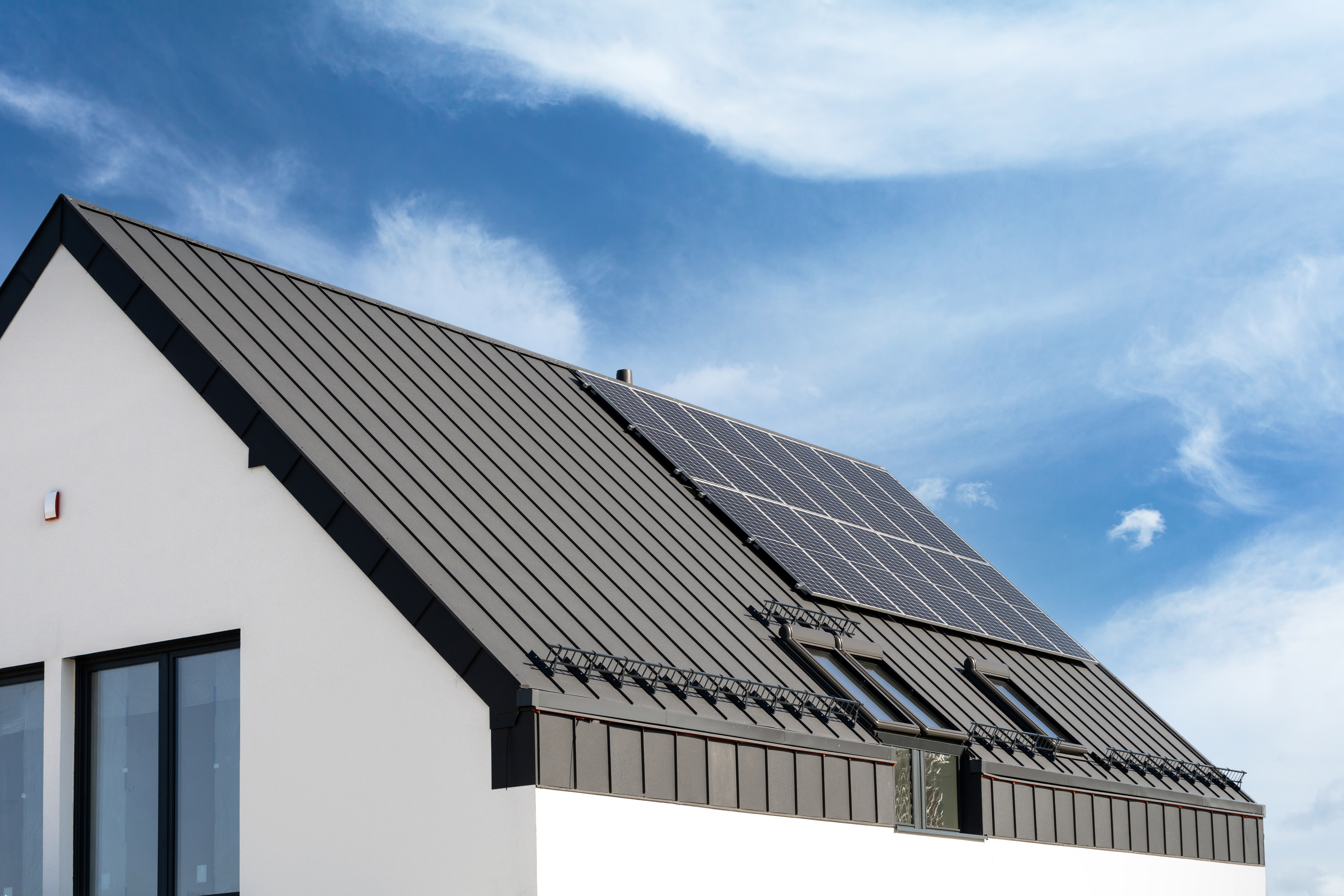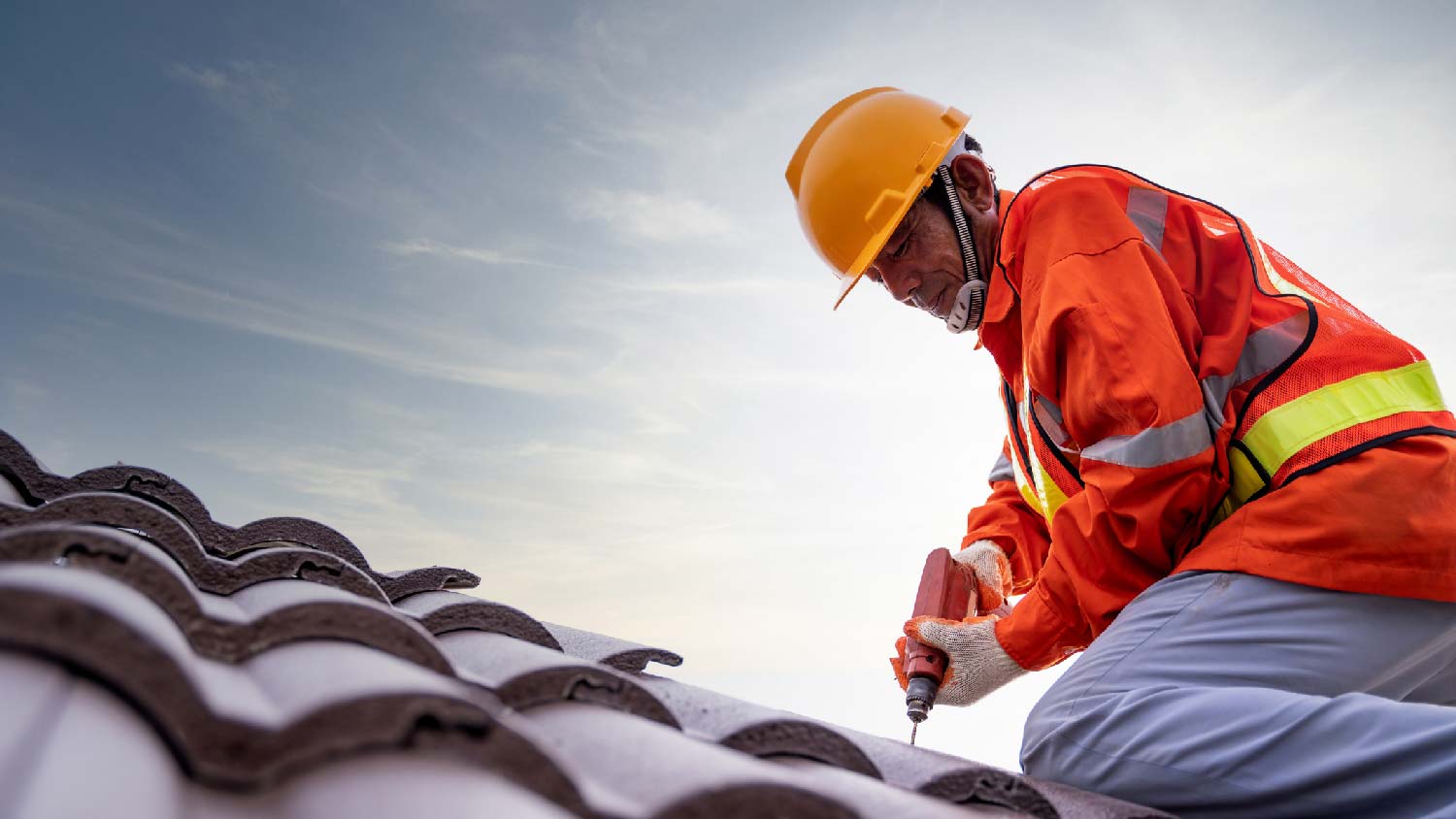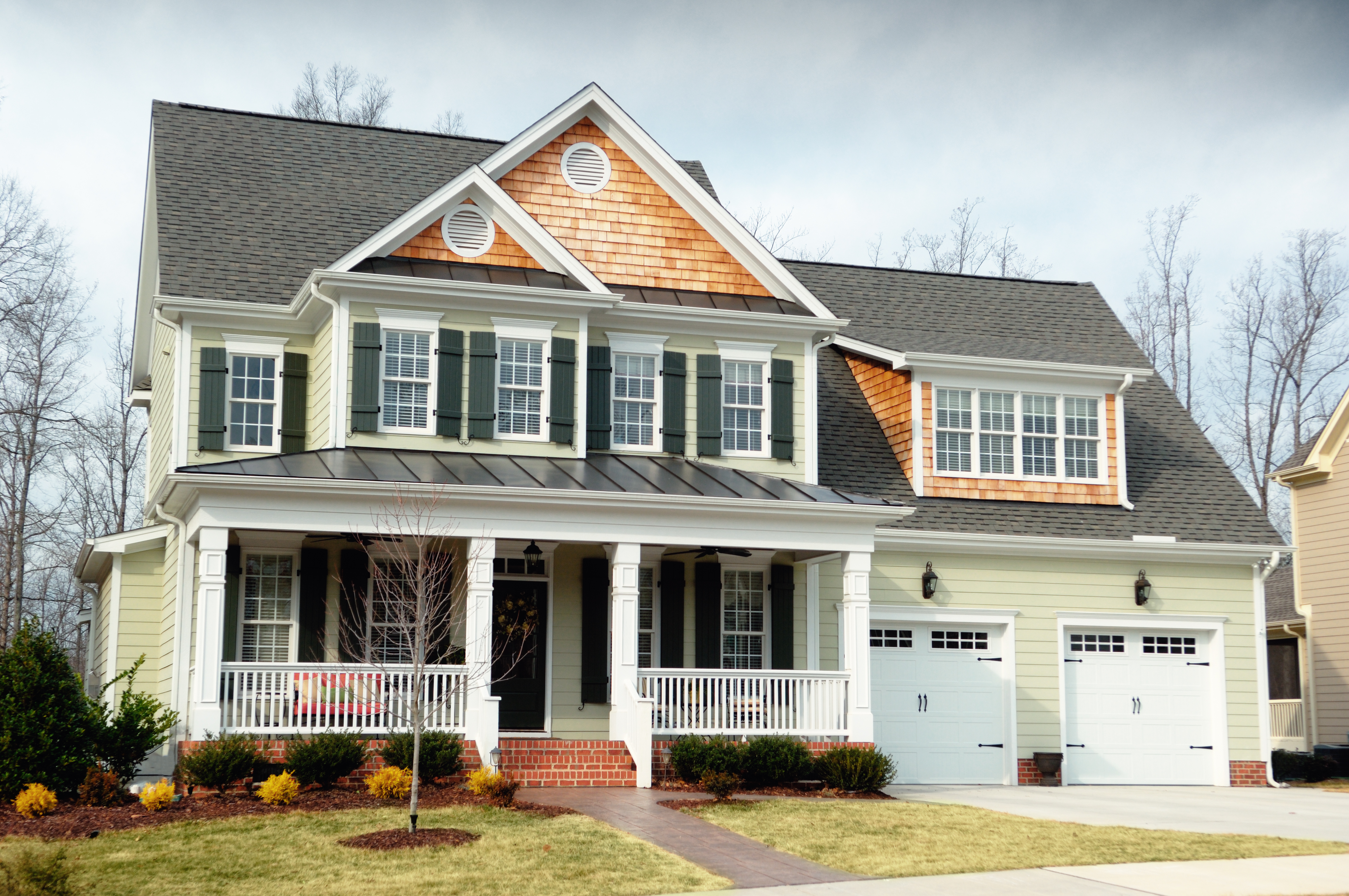
A metal roof can defend your home against Ohio’s varying weather conditions. Learn how much a metal roof costs in Columbus, OH.
Like floors, roofs can be slippery when wet


Rain can make your roof deck slippery, making it dangerous for DIYers and professionals to work in the rain.
Moisture trapped under your shingles can lead to mold growth and poor fastener connections.
Some shingle manufacturers may actually void your roof warranty if you install the materials in the rain.
If you’re installing a new roof and the weather isn’t cooperating, you might wonder if it’s safe to install shingles in the rain. While light rain might be safe for professionals to work in, most of the time, you’ll want your roofing materials to be completely dry when you install them. In this guide, we’ll explain why you shouldn’t install shingles in the rain and what to do if the weather surprises you mid-project.
Generally speaking, no, you shouldn’t install shingles in the rain. Not only is it unsafe to work on a slippery roof deck, but rain and moisture can actually affect the installation itself, leading to a less stable roof, warping of the roof deck, and even mold and mildew becoming a problem under your shingles. If you’re DIYing roof repair or replacement, always check the weather beforehand and plan around precipitation.
Most local roofing companies also won’t install shingles in the rain—which should serve as a warning for any DIYers considering it.
Roofing contractors might be willing to work in light rain if they believe it’s safe, but they’ll likely delay the installation if they expect moderate to heavy rain. They may wait a day or two after heavy precipitation to allow your roof deck to dry out, too. If you’re in a rush to avoid ongoing water damage from a leaking roof, hire a roofing contractor who is willing to work in less-than-ideal working conditions to get the job done as quickly as possible.

There are a few reasons you should avoid installing shingles in the rain, including safety issues and problems with the installation itself.
Most importantly, rain can make your roof deck slippery, which makes working on the roof far more dangerous. Professionals with proper roofing harnesses and experience might be willing to work in light rain, but you should never get up on your roof if it’s actively raining or if the roof deck is wet.
If you’re installing solar roof shingles, it can also be dangerous to make the necessary electrical connections in wet conditions.
Rain can warp and distort your roof decking because the wood will absorb moisture. Installing shingles over a wet roof deck will hold that moisture in and make the problem worse. You could end up with a wavy or uneven roof if you move forward with the installation while it’s raining.
Depending on how long the installation takes and how heavy the rain is, you could also run into problems with water seeping through the roof deck and causing water damage in your home.
Installing roof shingles over a wet roof deck will trap the moisture between the building materials and can lead to mold and mildew. The space will eventually dry out, but likely not before you do some damage to the decking material.
Your roof deck will expand slightly when it’s exposed to moisture, and driving roofing nails into a wet deck won’t cause any problems right away. However, when the wood sheds the moisture and shrinks, the movement can compromise the connection with the fastener, leading to a less secure roof.
Finally, some roof shingle manufacturers will void your warranty if you or a professional install the shingles in the rain. This depends on the company and the product line, but even if your specific warranty doesn’t mention anything about installation conditions, the fact that some do mention it should be enough to lead you or your professional to wait out the rain.
Sometimes, you plan around the weather the best you can but still get hit with rainfall while your installation is underway. If it does start raining, it’s a good idea to set up some tarps to keep the exposed roof decking dry while you wait for the rain to pass.
Alternatively, you can work in sections if you’re doing the job yourself. Tear off a section of old roof material and put down the underlayment right away. Install new shingles over that section before moving on to the next one. This can take some additional roof measuring to coordinate, but it will help minimize the amount of roof deck that sees direct rainfall.
D1 Roofing delivers outstanding service from beginning to end, backed by a strong warranty and expert teams. I highly recommend them for their excellence in meeting and surpassing expectations with unmatched communication. Choosing D1 Roofing was flawless decision
Window Depot did an amazing job on my deck. I wasnt sure what I wanted to do, but their composite decking was affordable and will last a long time. I am excited to have family over, and I am no longer embarrassed by my backyard. Jeff and the ground crew were polite, respectful, and caring for...
Storms Mobile Welding was great to work with. They were prompt, professional and did an overall excellent job on the project. I highly recommend.
They damaged multiple items on my property, including a marble slab used as a table top, tried to hide it, and refused to pay or replace. Arrived day one without a ladder to access roof & delayed a day. Left a mess in back yard; didn't wear face masks; no show by owner to property to see damages
Had to call to fix sloppy roof work. Paella window that was installed could not be opened and released for cleaning. Never found out why. Got a letter from city that they never got a final inspection. Called AIS and they said why don’t we call for the inspector to come. He laughed when I said...
What a pleasure working with a professional organization that takes pride in its work and wants to ensure customer satisfaction. Out of the several quotes I received for the re-roof, Capps was not the cheapest, but I felt I could trust them to do an excellent job and I was not disappointed....
They did a great job. They checked to determine where the squirrel was gaining entry and set traps to catch it. They removed all of the squirrels (there was only one) and kept the traps in the area with fresh bait to ensure there were no more. They were thorough & effective. Also they...
A wild goose chase. Maybe this is no big deal since this was not an emergency - not a tree that had crashed through my roof - just a nuisance tree that needs to be removed. Even so, it strikes me as quite careless and perhaps a bit rude.
Brad gave us an extensive explanation of our options in roof replacement, made an estimate within the parameters of the insurance adjuster's estimate, told us when he would be able to do the work, showed up at that time, and then did the work extremely well. He did everything he said they...
From average costs to expert advice, get all the answers you need to get your job done.

A metal roof can defend your home against Ohio’s varying weather conditions. Learn how much a metal roof costs in Columbus, OH.

Learn about roof replacement costs in Columbus and what factors are at play to budget accurately and make sure you’re getting a fair price.

Dealing with a visibly damaged roof or leak? Learn about roof repair costs in Columbus to see how much you’ll need to budget for a permanent solution.

Homeowners can fill a gap between their roof and wall with sealant or wire mesh. Here are three steps to help you get the project done safely.

Wondering how to decide between the different types of roof shingles? Here's what you need to know about each and how to choose what's best for your home.

Choosing the right roofing material can help your home stand up to snow, ice, and harsh winds. Learn more about the best roofing materials for cold climates.